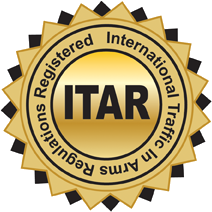 Last week I received a call from an FFL client who was concerned about a conversation he had with an ATF agent during a routine audit.
Last week I received a call from an FFL client who was concerned about a conversation he had with an ATF agent during a routine audit.
My client holds a manufacturing FFL but has never actually engaged in manufacturing since his retail business has happily continued to grow and take up all of his available time. However, the ATF agent told him that, as a manufacturer (active or not), he needed to register with the State Department and pay a yearly fee.
At the end of call, he had two basic questions:
“What requirement was the agent talking about?”
and
“Do I really need to register and pay this fee?”
Let’s start with the first question. The ATF agent was referring to the requirements of the International Traffic in Arms Regulations (ITAR) which were promulgated to implement the provisions of the Arms Export Control Act of 1976 (AECA).
My client had searched on the internet and spoken with other manufacturing FFLs. Some had registered and paid the fee and some had not. Those who had not stated various beliefs such as “You don’t have to register if you make fewer than 50 items per year.”
That sounded reasonable to my client and it momentarily reassured him. But this is nothing more than an internet rumor. The regulation which governs the registration requirement makes it clear.
Any person who engages in the United States in the business of either manufacturing or exporting defense articles or furnishing defense services is required to register with the Directorate of Defense Trade Controls. For the purpose of this subchapter, engaging in the business of manufacturing or exporting defense articles or furnishing defense services requires only one occasion of manufacturing or exporting a defense article or furnishing a defense service. Manufacturers who do not engage in exporting must nevertheless register.
As for what constitutes ‘defense articles’, 22 USC 121 contains a complete listing under what is known as The United States Munitions List (USML). The very first item listed is “Nonautomatic and semi-automatic firearms to caliber .50 inclusive.” It goes on to include “Ammunition/ordnance for the articles [above].”
The short answer is that those licensed to manufacture firearms or ammunition are covered by ITAR and are required to register and pay the registration fee.
So … how bad is this fee? It’s pretty bad. If you are not engaged in exporting then you would be considered a ‘Tier 1’ registrant. Therefore you would only have to pay the lowest possible fee.
A set fee of $2,250 per year is required for new registrants or registrants for whom the Directorate of Defense Trade Controls has not reviewed, adjudicated or issued a response to any applications during a 12-month period ending 90 days prior to expiration of the current registration.
After I explained this to my client, he asked “Why haven’t I heard about this before? Why doesn’t the ATF tell us about it?” Well … they do … sort of.
In the ATF Importation Guidebook they note that “In order to engage in the business of exporting, manufacturing, or brokering items on the USMIL you must be registered with the Department of State which administers the export and manufacturing provisions of the AECA. Generally, persons holding a manufacturer’s FFL (Types 06, 07, and 10) must register as a manufacturer with the Department of State unless specifically exempted.”
Are there 06, 07, or 10 type FFLs who have not registered and have not been prosecuted? Yes there are. But they could be prosecuted at any time and the penalties are severe.
Is it stupid? Of course it is! But legally there is no question. If you are getting, or already have, an 06, 07, or 10 FFL then you need to consider the ITAR yearly registration fee as a cost of doing business and register.
Disclaimer: This information is presented for educational purposes only and does not give rise to an attorney-client relationship. Additionally, I am licensed to practice law in the Commonwealth of Virginia and this answer may not be appropriate for other states.





